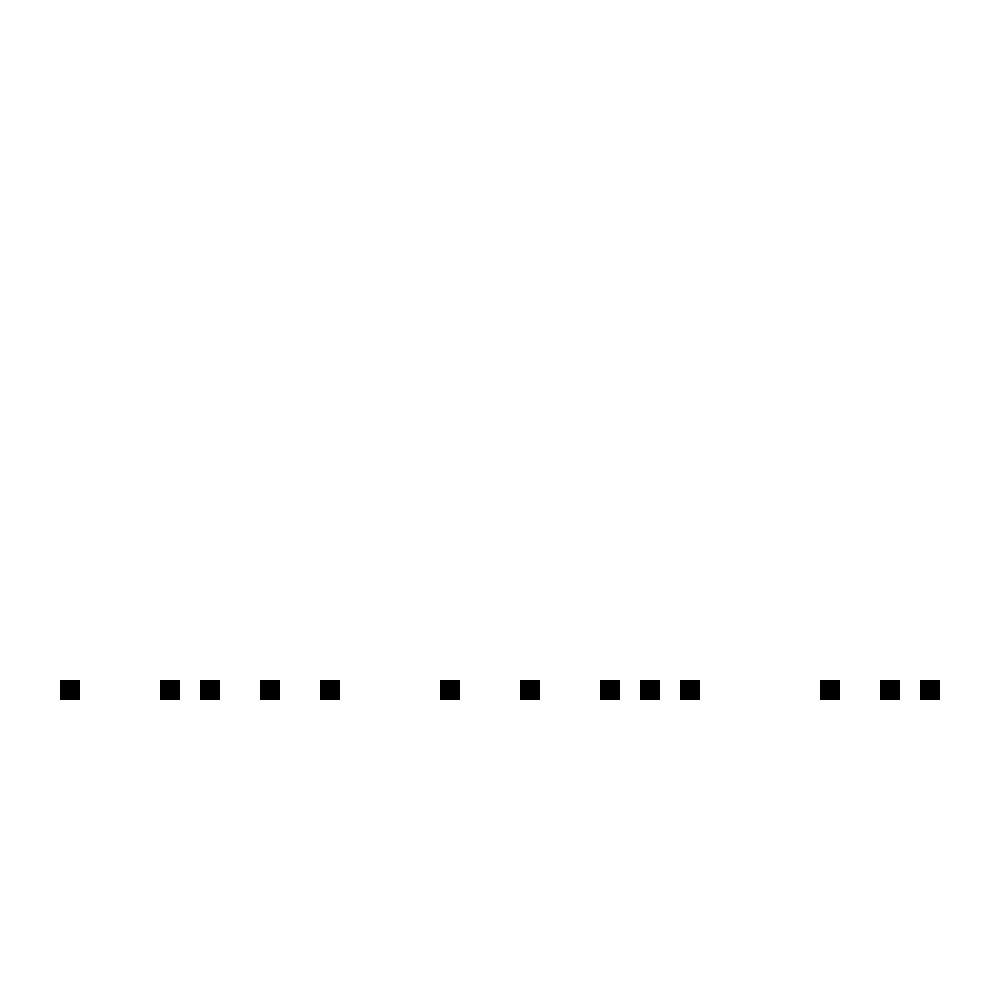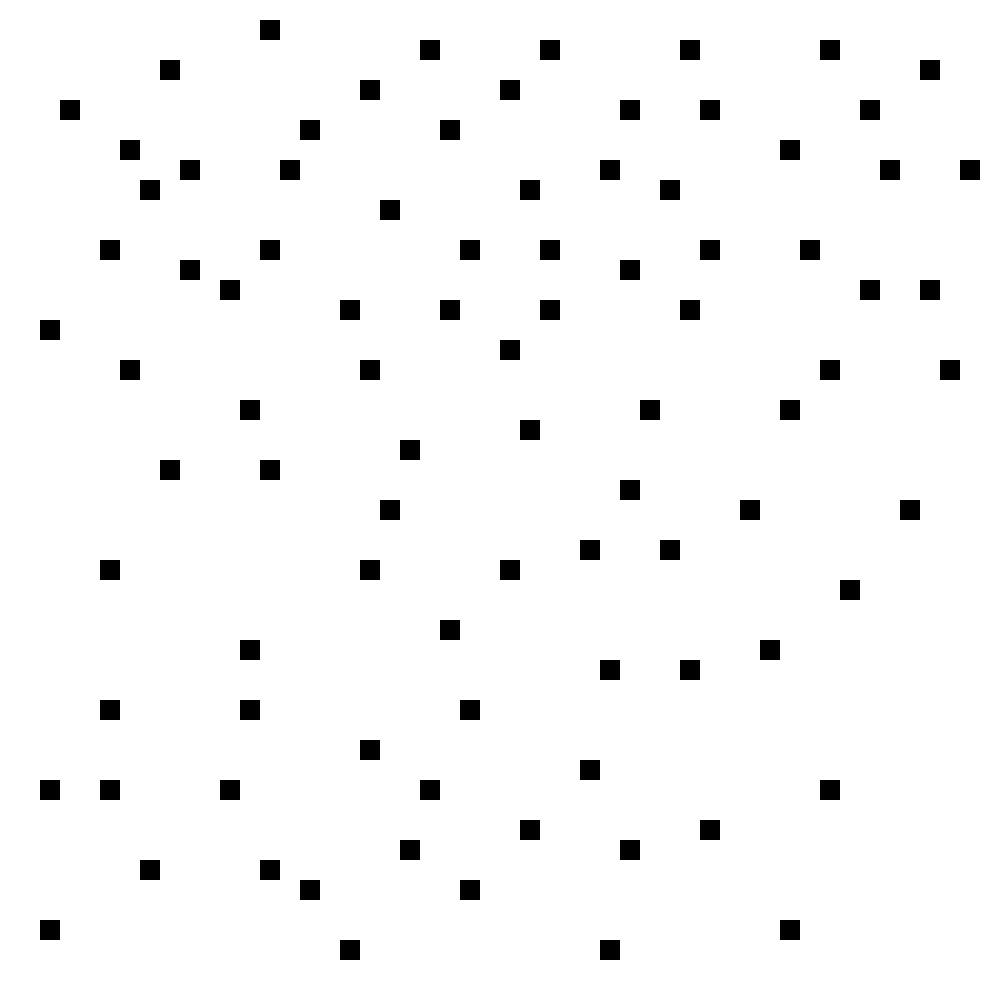Search: keyword:unwordable
|
|
| Displaying 11-20 of 22 results found.
|
( prev | next ) page 1 2 3
|
|
|
Sort:
id
Format:
long
Filter:
(all | no meta | meta)
Mode:
(words | no words)
|
|
|
|
|
|
| |
|
| BP1161 |
| Image contains the exact arrangement of pixels that form the "S" creature depicted in EX9532 vs. not so. |
|
| |
|
|
|
|
CROSSREFS
|
Adjacent-numbered pages:
BP1156 BP1157 BP1158 BP1159 BP1160 * BP1162 BP1163 BP1164 BP1165 BP1166
|
|
|
KEYWORD
|
unwordable, notso, arbitrary, handed, leftright, updown, stretch, blackwhite, creativeexamples, right-null, perfect, pixelperfect, help
|
|
|
AUTHOR
|
Leo Crabbe
|
| |
|
|
| |
|
| BP1246 |
| Any symmetry exhibited by some non-empty subset of the objects is also a symmetry of the whole thing vs. not so. |
|
| |
|
| |
| |
|
|
| |
|
| BP1247 |
| No straight path from one side of the panel to the other passes through the grey shape without hitting a black region vs. such a path exists. |
|
| |
|
| |
| |
|
|
| |
|
| BP1248 |
| No straight path passes from a white region to a grey one, then to white again (without hitting black) vs. such a path exists. |
|
| |
|
| |
| |
|
|
| |
|
| BP1268 |
| Palindromic when elements are grouped into (more than one) equal-sized blocks vs. no grouping of elements into (more than one) equal-sized blocks is palindromic. |
|
| |
|
|
|
|
COMMENTS
|
Any palindrome would be sorted left, except strings of length zero or one. |
|
|
CROSSREFS
|
Adjacent-numbered pages:
BP1263 BP1264 BP1265 BP1266 BP1267 * BP1269 BP1270 BP1271 BP1272 BP1273
|
|
|
KEYWORD
|
precise, allsorted, unwordable, notso, sequence, traditional, miniworlds
|
|
|
CONCEPT
|
element_wise_symmetry (info | search),
element_grouping (info | search),
sequence (info | search),
same_shape (info | search),
same (info | search)
|
|
|
WORLD
|
[smaller | same | bigger]
zoom in left | zoom in right
|
|
|
AUTHOR
|
Leo Crabbe
|
| |
|
|
| |
|
| BP1271 |
| Positive correlation vs. negative correlation. |
|
| ?
 | ?
 |
|
|
|
|
|
COMMENTS
|
All examples in this Bongard Problem are scatter plots. Each dot represents a data point.
"Positive correlation" means that when the X value increases, the Y value tends to increase as well (in the long run), while "negative correlation" means that when the X value increases, the Y value tends to decrease. |
|
|
CROSSREFS
|
Adjacent-numbered pages:
BP1266 BP1267 BP1268 BP1269 BP1270 * BP1272 BP1273 BP1274 BP1275 BP1276
|
|
|
EXAMPLE
|
Example TM4854 does not fit on either side because when the X value increases, the Y value stays the same.
Example TM4855 does not fit on either side because there is no correlation. |
|
|
KEYWORD
|
fuzzy, minimal, unwordable, teach, spectrum, dual, handed, leftright, updown, rotate, stable, hardsort, left-narrow, right-narrow
|
|
|
AUTHOR
|
Ben
|
| |
|
|
| |
|
| BP1275 |
| There is a way of grouping elements into (more than one) equal-sized blocks such that no block appears twice vs. there exists no such grouping. |
|
| |
|
| |
| |
|
|
| |
|
| BP1276 |
| Ways of representing the sequence "ABABCBACCBAC" by grouping its elements into equal-sized blocks and relabelling them (identical blocks are represented by the same element) vs. representations of different sequences. |
|
| |
|
| |
| |
| |
|
|
|
|
|
|
|
|